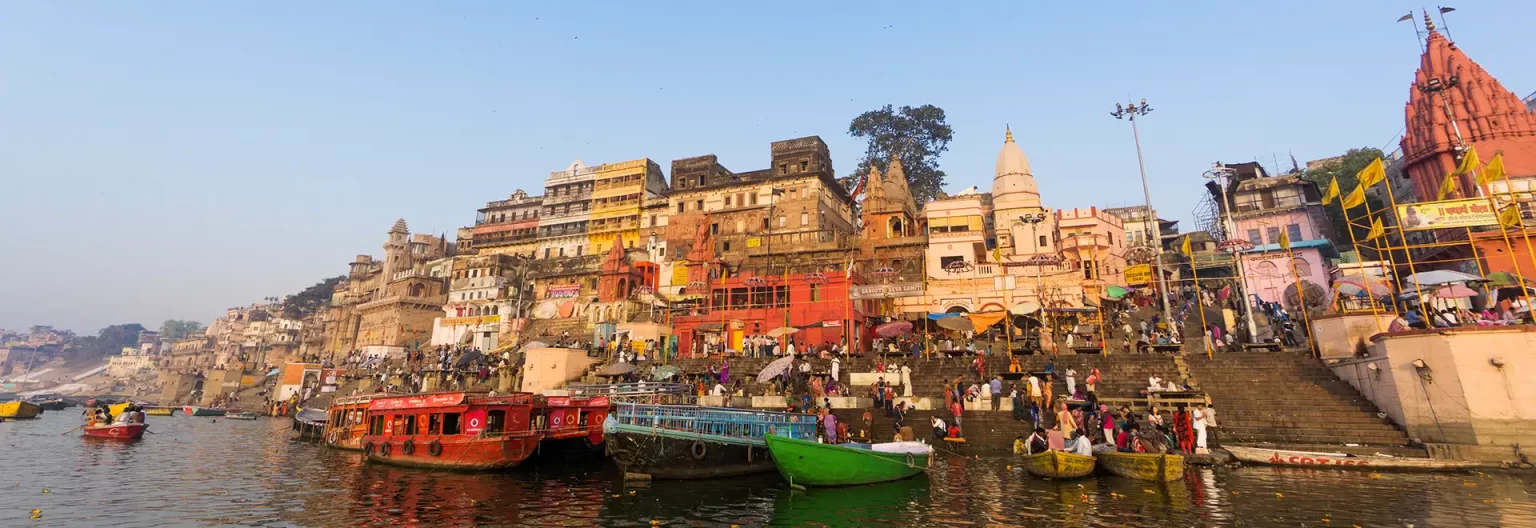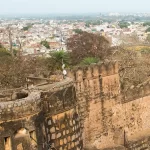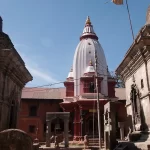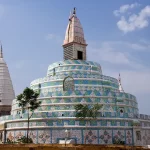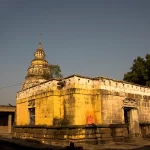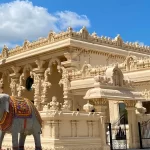Varanasi | Sarnath: Delve Deep into Religious and Spiritual Heritage
Cities of Varanasi and Sarnath of Uttar Pradesh are religious hotspots but also important locations holding deep spiritual and cultural importance. These sites form the ancient and continuously unfolding Hinduism and Buddhism epics for millions of pilgrims and tourists visiting annually. Let’s find out a bit more about why these cities are integral to India’s religious space.
1. Varanasi: The City of Light:
Varanasi, or “City of Light,” is a city filled with myth, tradition, and religious practice. It is one of the oldest cities continuously inhabited in the world and is the spiritual capital of India. The city is situated on the banks of the holy river Ganga, and the connection to Lord Shiva makes it a pilgrimage place for the faithful in quest of spiritual purification.
Key Attractions:
Kashi Vishwanath Temple: This highly venerated temple is dedicated to Lord Shiva and is the holy centre of Varanasi. According to the pilgrims, worship here can absolve a person of all sins and offers a path to liberation (moksha). The corridors are packed with devotees repeating mantras and seeking blessings.
Ganga Ghats: The ghats of Varanasi, Dashashwamedh Ghat and Assi Ghat, are the soul abodes of the city. They are places of worship and ritual bathing and spiritual healing. The evening Aarti at Dashashwamedh Ghat is such a spectacular sight, where fire, incense, and sacred music are performed like a choreographed ritual by the priests.
Banaras Hindu University (BHU): Founded by Madan Mohan Malaviya, this institution is not only a university but also a place of culture where classical music, dance, and art are preserved and promoted. The campus is known to be the largest repository of ancient manuscripts, sculptures, and archaeological artifacts in the country.
Assi Ghat: It is tranquil and peaceful, where pilgrims take a dip in the Ganges and also do their prayers to Lord Shiva. It also boasts of morning yoga sessions, boat rides, and meditation practices.
Spiritual Practices: Varanasi is strong on its vibrant spiritual culture as many ashrams and temples provide retreats, meditation, and religious guidance. It is not rare to find all nationalities practicing yoga and meditation participating in sessions riverside.
2. Sarnath: Birthplace of Buddhism:
Sarnath is only a few minutes’ drive from Varanasi. It is the site of the first sermon delivered by Lord Buddha after enlightenment. It’s the turning point in the Buddhist era; the solitary path of meditation now shifts to community spirit.
Main Attractions:
Dhamek Stupa : It is the main attraction in Sarnath and symbolizes the teachings of the Buddha spreading far and wide. It is flanked by ruins of monasteries and stupas of different periods of Buddhist history.
Mulagandha Kuti Vihara: Thai Sangha has built a modern Buddhist monastery that consists of beautiful murals regarding the life of Buddha and the Jataka tales about the lives of Buddha. Tranquil surroundings make it ideal for meditation and reflection.
Archaeological Museum: There is the Archaeological Museum at Sarnath that has collected wonderful relics, sculptures, and artifacts pertaining to Mauryan, Gupta and post-Gupta periods. Amongst those, prominent are Ashoka Pillar, with Lion Capital; it symbolizes India.
Chaukhandi Stupa: This was initially built by Ashoka. It is a place where, after enlightenment, Buddha first met his disciples. This is the site connected with Buddhism throughout Asia and a sacred site for pilgrimage among all Buddhists.
Bodh Gaya Connection: For devotees who visit Bodh Gaya, it is their ultimate desire to pay a visit to Sarnath for he received enlightenment at Sarnath. The trip from Gaya to Sarnath is to describe the wheel of spiritual evolution from meditation, enlightenment until dissemination.
Cultural and Spiritual Practice
Varanasi and Sarnath are essentially cultural and religious exchange centers. The numerous ashrams, monasteries, and cultural centers in Varanasi and Sarnath allow pilgrims to participate in meditation, chanting, yoga, and prayer. These activities help pilgrims grow spiritually and align them with India’s rich heritage.
Vedic Chanting: Many ashrams hold regular sessions of Vedic chanting in Varanasi. Here, devotees chant sacred mantras, hymns, and texts in the rhythmic manner passed down through generations. Such sessions are open to visitors who would like to join in.
Yoga and Meditation Centers: Throughout each city, there are centers which offer classes and classes in both Ashtanga and Hatha Yoga as well as other traditional Indian practices, all which guide people further along the path toward achieving their own inner spiritual state.
Festivals and Rituals: Festivals like Maha Shivaratri, Dev Deepawali, and Buddha Jayanti are celebrated with much fervor in Varanasi and Sarnath. Thousands of devotees, pilgrims, and tourists attend these festivals, believing that it would attract them into the deep spiritual atmosphere.
The spiritual journey through Varanasi and Sarnath is one of transformation where ancient traditions blend into the contemporary spiritual practices of the modern world. This pilgrimage is not only to the sacred sites but to an understanding of life, faith, and one’s position in the universe. You seek knowledge, solace, or simply a deeper connection with your spiritual self; these two cities offer a pathway to enlightenment.

